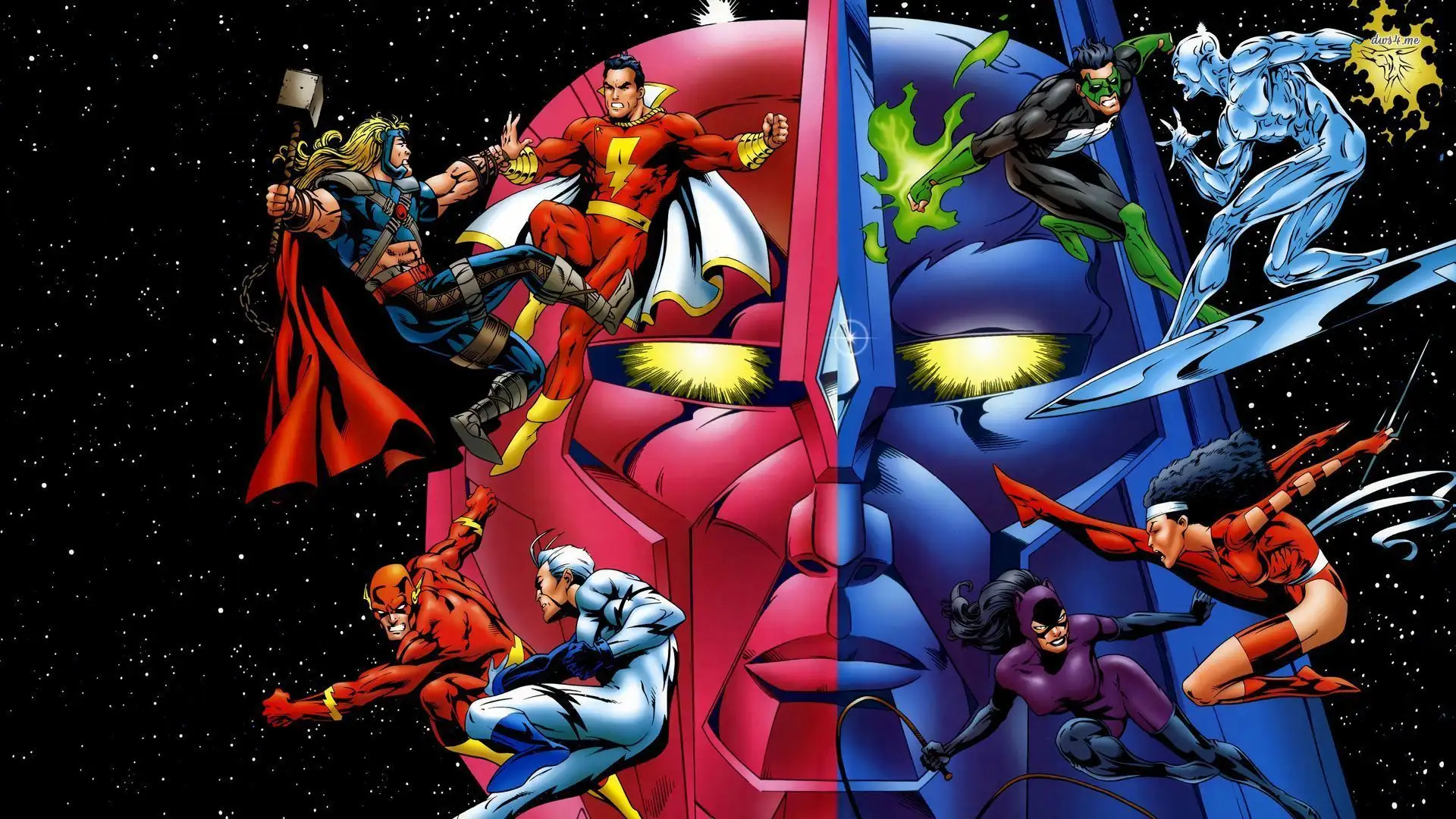
Top 30 Cartoon Characters That Were Villains
Our list rounds up the top 30 cartoon characters that were villains, each one more wonderfully wicked than the last.
Debates, Writer Resources
Fiction and nonfiction. While there are a plethora of apparent differences, the two merge in more ways than imaginable
.

Reality and dream often mingle. In the minds of the gifted, they come alive and become as one.
Tyrant
Fiction and nonfiction, two seemingly polar entities, are far more alike than they appear to be. Even within the bookish divide of fiction vs nonfiction, readers of one of the genres still grudgingly admit this fact. While there are a plethora of apparent differences, the two merge in more ways than imaginable.
We assess both of these core literary genres, aiming to highlight the richness and diversity of the literary landscape and encourage a deeper appreciation for both fiction and nonfiction.
Fiction refers to stories that come from the imagination of the author.
You identify a fictional piece by its invented characters, settings, and plots. In Fantasy, for instance, authors have the freedom to create any scenario they wish, making the subgenre a diverse and imaginative field.
Many genres in contemporary fiction draw on the personal experiences of their respective authors, compelling readers to explore new worlds, experience different lives, and understand various perspectives.
For many readers, this ability to captivate and transport is what makes fiction so appealing. It allows them to escape reality and dive into a world crafted entirely from the author’s creativity.

Nonfiction is reality-based art written to reflect actual events, people, facts, and truths.
Like fiction, nonfiction has several subgenres, ranging from memoirs like The Diary of a Young Girl to motivational books like Mark Manson’s The Subtle Art of Not Giving a Fuck.
While fiction is favored for its ability to entertain, nonfiction’s primary goal is to educate, providing factual information and accurate accounts of real-life events, people, and phenomena.
However, as you’ll see, works in both genres often share some traits of the other.
Fiction and nonfiction are often seen as opposites, but intersect in interesting ways. This occurs in various forms, blending elements to create unique and engaging works.
While many definitions of fiction infer that the genre is not based on reality, this author begs to differ, for fiction is every bit as based on reality as nonfiction.
In nonfiction books, we see some hallmarks of fictional works, such as invented names and proxy locations.
For instance, in some memoirs, historical accounts, and biographies, names are made up to protect the identities of sensitive players or places.
Fiction can also be found in the very writing style of specific nonfiction works. This is usually the case with light-hearted real-life accounts, motivational books, or journals, where fiction’s signature subjective writing style makes the text more engaging, easier to read, or even less boring.
Novels like Born a Crime carefully tread this line, combining pure fiction-style storytelling with the depiction of serious events.
There is also an unspoken rule that every work of art remains subjective, bound to the confines of its author’s comprehension. No recollection of real-world events can be 100% accurate. Tales of conflict tend to be told only from the victors’ angle. In short, human opinion and insight are flawed.
This makes it necessary for fiction to meld with nonfiction. Fiction is the cement that bonds nonfiction, giving it form and tailoring it to elicit specific emotions from readers, as nonfiction works are designed to be.

Contrary to what many people think, fiction is based on reality.
Such is the seriousness of this claim that, with some genres, such as African Literature, some sections of the reading community are beginning to murmur that contemporary works in the genre bear too much similarity with ongoing, sad, grim realities on the continent.
This indicates one thing- that authors write about their personal experiences and those of people around them. Yes, it’s all wrapped up in fancy layers, fluff, dreamy words, and exciting penmanship.
But it’s all pointing towards reality.

Some of the most significant didactics in literature have come in the form of fiction. Using totally made-up elements, an author with a clear vision of their story can teach core moral lessons and instruct with a certain precision that nonfictional writing cannot properly deliver.
What better way to learn about loyalty in friendship than reading about characters like Harry and Hermione? What better way to provide enlightenment on modern health issues than to write tragic tales like Nicolas Sparks’ A Walk to Remember?
Surely, Chinua Achebe’s eternal classic, Things Fall Apart, is as prophetic and ominous in its storytelling as any religious canon!
Another way that fiction and nonfiction merge is in creative nonfiction, a genre that combines literary styles and techniques usually associated with fiction to tell true stories.
Creative nonfiction authors use storytelling techniques like vivid descriptions, character development, and narrative arcs to make factual writing more engaging. An example of this is Into the Wild by Jon Krakauer, which tells the true story of Christopher McCandless with a narrative style that feels like a novel.
Historical fiction is another area where fiction and nonfiction meet. Authors of historical fiction base their stories on actual events and people, but take creative liberties to fill in the gaps or enhance the narrative.
Anthony Doerr’s All the Light We Cannot See is an example. It is set during World War II and incorporates real historical elements with a fictional storyline.

It’s no news that book snobbery exists between fiction and nonfiction. One party is considered dreamy and unrealistic, while the other is seen as hypocritical.
On the fiction side of this divide, literary enthusiasts regard the opposite genre as unrealistic, unsophisticated, and inept. In this camp, there’s the general feeling that specific nonfiction subgenres, such as motivational books, contain embellishments and advice inapplicable to real-world scenarios.
The adherents of nonfiction are the opposing hierarchy, regarding genres like romance, science fiction, and Fantasy to be taken with as much seriousness as toddler babble.
This book snobbery creates an unnecessary divide in the literary world, as readers tend to value specific genres and styles not only over others but at the expense of others.
The solution here is to strive to recognize the merits of both nonfiction and fiction and encourage diverse reading habits. This can help enrich literary experiences and contribute to a more inclusive literary culture.
Ultimately, a book’s value lies in its ability to engage, inspire, and move its readers, regardless of its genre or perceived prestige.
Fiction, with its imaginative narratives and invented characters, offers readers an escape into worlds that exist only in the author’s mind. Nonfiction, grounded in reality, provides factual accounts and insights into the real world.
The blending of fiction and nonfiction can impact readers by providing a deeper understanding of real events through the lens of storytelling. It can make complex or dry subjects more accessible and memorable, and let authors better explore truths about the human condition, society, and history in a way that purely factual or fictional works might not achieve.
While the fiction vs nonfiction debate will continue to rage, the lines between them will undoubtedly continue to blur as literature evolves.

The Tyrant Overlord. Fantasy buff and avid football fan.

Our list rounds up the top 30 cartoon characters that were villains, each one more wonderfully wicked than the last.

DC is great at making comics and animated movies, while the MCU has the upper hand in its cinematic aspects

Discover the best apps to read books for free in 2025. Access thousands of free e-books and audiobooks on your phone or tablet. ...

There are some outright funny cartoon characters who exist solely to crack you up, loud, hard, and with zero apology.

Things Fall Apart is for the colonizers as well as the colonized, helping to understand the role of colonialism in the realization...

While many of the Nollywood movies on our list are quite old, it’s a testament to the capabilities of the industry’s p...

While this isn’t an exhaustive list, it comprises some of the most popular mythical creatures from around the world.